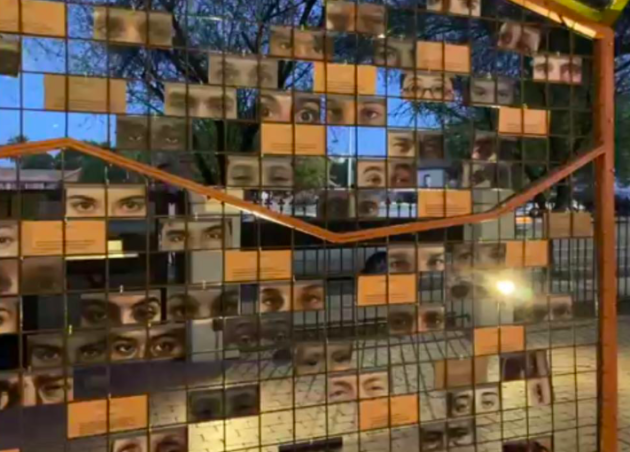
by admin
Clamor in the Desert: A Shelter for Anyone Who Feels Forlorn
We are living in uncertain times. In Argentina, my home, the flights are almost totally suspended and the feeling of confinement and distance becomes more evident.
I am an artist born in this country to Auschwitz survivors. Their story of exile and loss of their homeland, their language, their culture, marked my life and of course my art. I always felt some responsibility to try to renew and make their ancestors’ culture live in their new chosen land. That choice was obviously by default since they arrived in Argentina clandestinely as refugees.
Thus, borders, migrations and exiles, human rights, and the mother tongue have always been an essential core in my artistic concern, since I consider that art has the gift, but also the commitment to transmit and contribute to the formation of culture and popular thinking.
Being a woman is also a strong element in this feeling that I describe. Transmission of memory and the role of women in society is part of my message.
Somehow I feel that my place in the world is not only the ground on which I step but many other distant lands as well. It was perhaps because of this, that when I received the invitation to create this sukkah without being able to physically be in Arizona, it seemed like an appropriate challenge for someone with my mindset.
This is how Clamor in the Desert arose, a project in which an artistic and activist sukkah was built, with a focus on the responsibility in which this holiday summons us.

I had the honor of being commissioned by LABA: A Laboratory of Jewish Culture, through CANVAS and the Jewish Funders Network to present a sukkah at the Jewish History Museum in Tucson, Arizona, where emigrants, exiles, expatriates, immigrants, or refugees – all people displaced from their homes, seek a new life, an opportunity. This piece speaks about them. Our tradition describes the sukkah as an unstable and temporary construction, representing the fragility of human life and at the same time a shelter for anyone who feels forlorn. Kol Kore Bamidbar, are the Hebrew words to say “That voice that cries out for protection”.
It is with this spirit that I decided to transform the same materials that are often used to build barriers or fences, into walls of woven wire mesh that will serve this time as a refuge open to anyone who wishes to enter.
The same material that is used to build limitation and separation is used in this habitable installation to build a celebratory shelter for humanity as a whole.

This humanity is represented on the walls of the sukkah through printed images of eyes, that, in a participatory collective action will fill every wall. Visitors are invited to hang these eyes and complete with their presence the installation. Mirrors hanging from the structure will reflect the eyes of visitors, as witnesses, and tags with the first article of the Universal Human Rights Declaration in sixty different languages are also included.
In the time of our current plague, although our mouths are covered with protective masks; our voices in our sight continue to claim together for justice.
This cry now resounds in New York as well, and very soon the windows of the 14th Street Y will be covered with the eyes and gazes of the most diverse people, as well as with the first article of the Declaration of Human Rights written in contemporary and ancient languages, languages of native peoples of all America, and of course also Yiddish, Ladino and Hebrew.
I make a toast for this clamor to expand to many cities in the world, may we all open our eyes and take care of the equality and wellness of our neighbors.
—
Mirta Kupferminc
Clamor in the Desert is a collaboration of LABA: A Laboratory for Jewish Culture and the Jewish History Museum, made possible with the generous support of CANVAS. The work is part of the national project – Dwelling in a Time of Plagues – which makes new outdoor art possible at museum sites, with organizational support from the Council of American Jewish Museums. To see the other works on display, visit plaguedwelling.com.